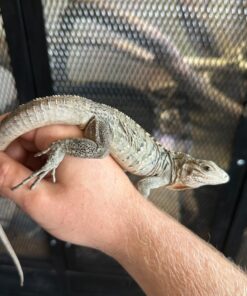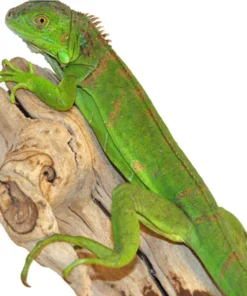$499.00
Spiny Tail Iguana for Sale. An Extensive Guide to Owning and Caring for These Unique Reptiles If you’re an enthusiast of reptiles, you like
SKU: N/A
Categories: Iguanas for Sale, Lizards for Sale
Spiny Tail Iguana for Sale : An Extensive Guide to Owning and Caring for These Unique Reptiles
If you’re an enthusiast of reptiles, you’re likely familiar with the **Spiny Tail **, a unique and fascinating species that has garnered attention for its striking appearance and distinctive behavior. Known for their spiky tails and robust personalities, these iguanas make intriguing pets, but they also come with their own set of care requirements and responsibilities. If you’re considering purchasing a **Spiny Tail **, or if you’ve searched for phrases like “Mexican Spiny ” or “Black Spiny Tail Iguana,” this comprehensive guide will provide you with everything you need to know about these captivating reptiles.
At **New York Reptiles**, we understand the importance of educating prospective reptile owners about the species they are interested in. In this guide, we’ll dive deep into everything related to Spiny Tail Iguanas—from their natural history to their care, diet, and living conditions. You’ll also learn how to find the best Spiny Tail Iguanas for sale, along with important considerations before bringing one home. Whether you’re a seasoned reptile owner or a beginner, this guide is designed to help you make an informed decision and ensure you provide your iguana with the best possible care.
What Is a Spiny Tail Iguana?
The **Spiny Tail **, belonging to the *Ctenosaura* genus, is a group of medium to large-sized lizards native to Central America and Mexico. Their most distinguishing feature, as the name suggests, is their spiky tail, which they use as a defense mechanism against predators. These iguanas are sturdy, adaptable, and found in a variety of environments—from tropical forests and rocky areas to even urban settings.
There are over 15 species of Spiny Tail Iguanas, each with their own distinctive traits, but two of the most well-known and commonly kept species are the **Mexican Spiny Tail Iguana** (*Ctenosaura pectinata*) and the **Black Spiny Tail Iguana** (*Ctenosaura similis*). These iguanas vary in size, color, and temperament, offering reptile lovers a wide range of choices when considering adding one to their collection.
Why Should You Choose a Spiny Tail Iguana?
Spiny Tail Iguanas are known for being hardy and highly adaptable, making them an excellent option for reptile enthusiasts looking for a robust and active pet. Here are several reasons why these iguanas have become a popular choice:
1. **Remarkable Appearance**: The Spiny Tail Iguana’s rugged, almost prehistoric look makes them stand out among other reptiles. Their spiky tails, combined with their striking patterns and often vibrant colors, make them visually captivating pets. Some species feature a range of colors from bright oranges and blues to more muted browns and blacks.
2. **Wide Range of Sizes**: Depending on the species, Spiny Tail Iguanas can range from medium to large sizes. Some species, like the Mexican Spiny Tail Iguana, can grow to around 3 to 4 feet long, while others, such as the Black Spiny Tail Iguana, can reach up to 5 feet in length. This variety in size allows you to select a species that fits your living space and experience level.
3. **Active and Engaging**: Unlike some other reptiles, Spiny Tail Iguanas are highly active during the day (diurnal) and enjoy exploring their environment. They are fast runners and strong climbers, adding an element of dynamism to their behavior. Watching them interact with their habitat can be both entertaining and rewarding.
4. **Long Lifespan**: With proper care, Spiny Tail Iguanas can live for 15 to 25 years in captivity. This long lifespan makes them a long-term companion for those looking for a pet that can be a part of their lives for many years.
5. **Unique Personality**: While individual temperament varies, many Spiny Tail Iguanas can become quite personable with consistent handling. They may be cautious at first but can grow accustomed to human interaction, especially if they are handled from a young age. Some can even become relatively docile and trusting over time.
Where to Find a Spiny Tail Iguana for Sale
When searching for a **Spiny Tail Iguana for sale**, it’s important to do your research and choose a reputable source. Here’s how to ensure you find a healthy and well-cared-for iguana:
#### 1. **Reputable Breeders**
Purchasing from a licensed and reputable breeder is one of the best ways to ensure you are getting a healthy, ethically-raised Spiny Tail Iguana. Breeders who specialize in iguanas will be able to provide detailed care sheets, background information on the iguana’s lineage, and any pertinent health records. A quality breeder will also be willing to answer all your questions and offer ongoing support after the sale.
#### 2. **Pet Stores**
Some exotic pet stores may carry Spiny Tail , but it’s essential to check the conditions in which they keep their reptiles. Ensure the store provides the proper enclosure, lighting, and diet for their animals. If you decide to purchase from a pet store, look for one with a solid reputation and a knowledgeable staff who can offer guidance on care.
#### 3. **Online Classifieds and Specialty Websites**
Searching online using terms like “**Spiny Tail,” “**Mexican Spiny Tail for sale near me**,” or “**Black Spiny Tail for sale**” can yield various results. However, buying reptiles online requires caution. Always ensure the seller is reputable, has positive reviews, and offers clear, high-quality photos of the iguana in question. It’s also a good idea to request video proof of the animal’s health and behavior before making a purchase.
#### 4. **Adopting from Rescues**
In some cases, you may find Spiny Tail available for adoption through reptile rescues. Adopting from a rescue can be a rewarding experience, as you are giving a new home to an iguana in need. Many rescues provide detailed histories of the animals they adopt out, ensuring you are well-prepared for your new pet.
Exploring Different Species: Mexican Spiny Tail Iguana
The **Mexican Spiny Tail Iguana** (*Ctenosaura pectinata*) is one of the most popular species for reptile enthusiasts, known for its distinctive appearance and hardy nature. Native to Mexico, these iguanas are found in arid and semi-arid regions and have adapted well to a wide range of environments.
Key Characteristics of the Mexican Spiny Tail Iguana:
– **Size**: This species typically grows between 3 to 4 feet in length, including the tail. Males tend to be larger than females.
– **Coloration**: Mexican Spiny Tail are known for their muted brown, gray, or tan coloration, often with dark bands or stripes along their bodies. Some individuals display vibrant blue or orange accents, particularly around their heads and necks.
– **Behavior**: These iguanas are alert and active, known for their speed and agility. While they may be skittish at first, with regular handling and care, they can become more accustomed to human interaction.
Exploring Different Species: Black Spiny Tail Iguana
The **Black Spiny Tail Iguana** (*Ctenosaura similis*) is another well-known species that boasts a striking dark coloration and larger size compared to other Spiny Tail Iguanas. Native to Central America, particularly Nicaragua and Costa Rica, this species is highly adaptable and has even been observed thriving in urban areas.
Key Characteristics of the Black Spiny Tail Iguana:
– **Size**: This is one of the largest species within the *Ctenosaura* genus, with males reaching lengths of up to 5 feet. Females are generally smaller, but still quite impressive in size.
– **Coloration**: As their name suggests, Black Spiny Tail are predominantly dark in color, often black or dark brown, with lighter stripes running down their backs and tails. Some may exhibit brighter hues of yellow or orange, particularly in males during the breeding season.
– **Temperament**: Black Spiny Tail can be more territorial than other species, especially the males. However, with consistent, gentle handling, they can become more docile over time. Their bold personality makes them a fascinating pet for experienced reptile keepers.
Caring for Your Spiny Tail Iguana
After finding the right **Spiny Tail Iguana for sale**, it’s crucial to set up their environment properly and provide the best care possible to ensure they thrive in captivity. Spiny Tail Iguanas have specific habitat, diet, and socialization needs that must be met to keep them healthy and happy.
#### 1. **Habitat and Enclosure Setup**
– **Size**: Spiny Tailare active and require large enclosures to move and climb freely. For adult iguanas, you’ll need a terrarium that’s at least 6 feet in length, 4 feet in height, and 3 feet in depth. Hatchlings and juveniles can start in smaller enclosures but will quickly outgrow them.
– **Substrate**: Choose a substrate that is easy to clean and safe for your iguana. Reptile carpet, coconut fiber, and newspaper are all good options. Avoid using loose substrates like sand or wood chips, as these can cause impaction if ingested.
– **Climbing Structures**: These iguanas are natural climbers, so provide plenty of branches, rocks, and ledges for them to explore. Ensure that their enclosure is escape-proof, as Spiny Tail are known for their agility.
####
2. **Temperature and Lighting**
– **Basking Area**: Spiny Tail require a basking area with temperatures between 95-100°F, which can be achieved with a heat lamp or ceramic heater. The ambient temperature of the rest of the enclosure should range from 75-85°F.
– **UVB Lighting**: Like many reptiles, Spiny Tail Iguanas need UVB lighting to synthesize vitamin D3, which is essential for calcium absorption and preventing metabolic bone disease. Provide UVB light for 10-12 hours a day, and replace the bulb every 6-12 months.
– **Humidity**: Keep the enclosure’s humidity levels around 40-60%. You can maintain this by misting the enclosure daily or using a humidifier.
#### 3. **Diet and Nutrition**
Spiny Tail Iguanas are omnivorous, meaning they eat both plant and animal matter. Their diet should include a mix of:
– **Vegetables**: Dark leafy greens such as collard greens, kale, and dandelion greens should make up the bulk of their diet.
– **Fruits**: Offer fruits like papaya, mango, and berries sparingly as treats.
– **Insects**: Younger iguanas require more protein, so offer insects like crickets, mealworms, and roaches. As they age, their diet should shift to primarily plant-based foods.
– **Supplements**: Use calcium and vitamin supplements to ensure they get all the necessary nutrients, especially if they don’t receive regular exposure to natural sunlight.
#### 4. **Handling and Socialization**
– **Patience is Key**: Spiny Tail Iguanas can be cautious around humans at first, especially if they haven’t been handled regularly. Start by allowing your iguana to get used to your presence before attempting to handle them.
– **Gentle Handling**: Handle your iguana gently, supporting their body with both hands. Regular, calm handling can help reduce their natural skittishness and build trust between you and your pet.
#### 5. **Health and Veterinary Care**
– **Veterinary Visits**: Regular check-ups with a reptile veterinarian are essential to catch any health issues early. Spiny Tail are prone to conditions like metabolic bone disease if they don’t receive adequate UVB lighting or calcium in their diet.
– **Common Health Issues**: In addition to metabolic bone disease, iguanas may develop respiratory infections, parasites, or injuries from fighting with other iguanas or escaping enclosures. Always monitor your iguana for signs of illness, such as lethargy, lack of appetite, or unusual behavior.
Legal Considerations When Owning a Spiny Tail Iguana
Before purchasing a Spiny Tail Iguana, it’s crucial to check your local laws regarding exotic pet ownership. Some states or municipalities have restrictions on owning non-native reptiles, and you may need a permit or license to keep one. Always research local regulations and ensure you are compliant before bringing an iguana home.
Chameleons and Other Exotic Pets
If you’re exploring reptile ownership further, you might also want to look into chameleons, another fascinating reptile species. Many reptile owners keep both Spiny Tail Iguanas and chameleons, as their care requirements can complement each other. Searching for a **chameleon for sale** alongside your search for a Spiny Tail Iguana can open up a world of unique pets that will enrich your home.
Both iguanas and chameleons have their own specific needs, but with proper care, you can enjoy the beauty and companionship these reptiles offer for many years.
Conclusion
Owning a **Spiny Tail ** can be an incredibly rewarding experience, but it comes with its own set of challenges. These active and robust reptiles require spacious enclosures, precise environmental conditions, and a proper diet to thrive in captivity. Whether you’re interested in the bold **Black Spiny Tail Iguana** or the striking **Mexican Spiny Tail Iguana**, there’s a perfect Spiny Tail Iguana out there for you. By following the guidelines in this comprehensive care guide, you’ll be well on your way to providing a loving and healthy environment for your new pet.
| sex | Female, Male |
|---|
Related products
Chameleons for Sale
$199.99
Iguanas for Sale
$999.99
Chameleons for Sale
$249.99
Chameleons for Sale
Parson Chameleon for Sale – Captive Bred Males | 14-15 Inches
$699.99



















